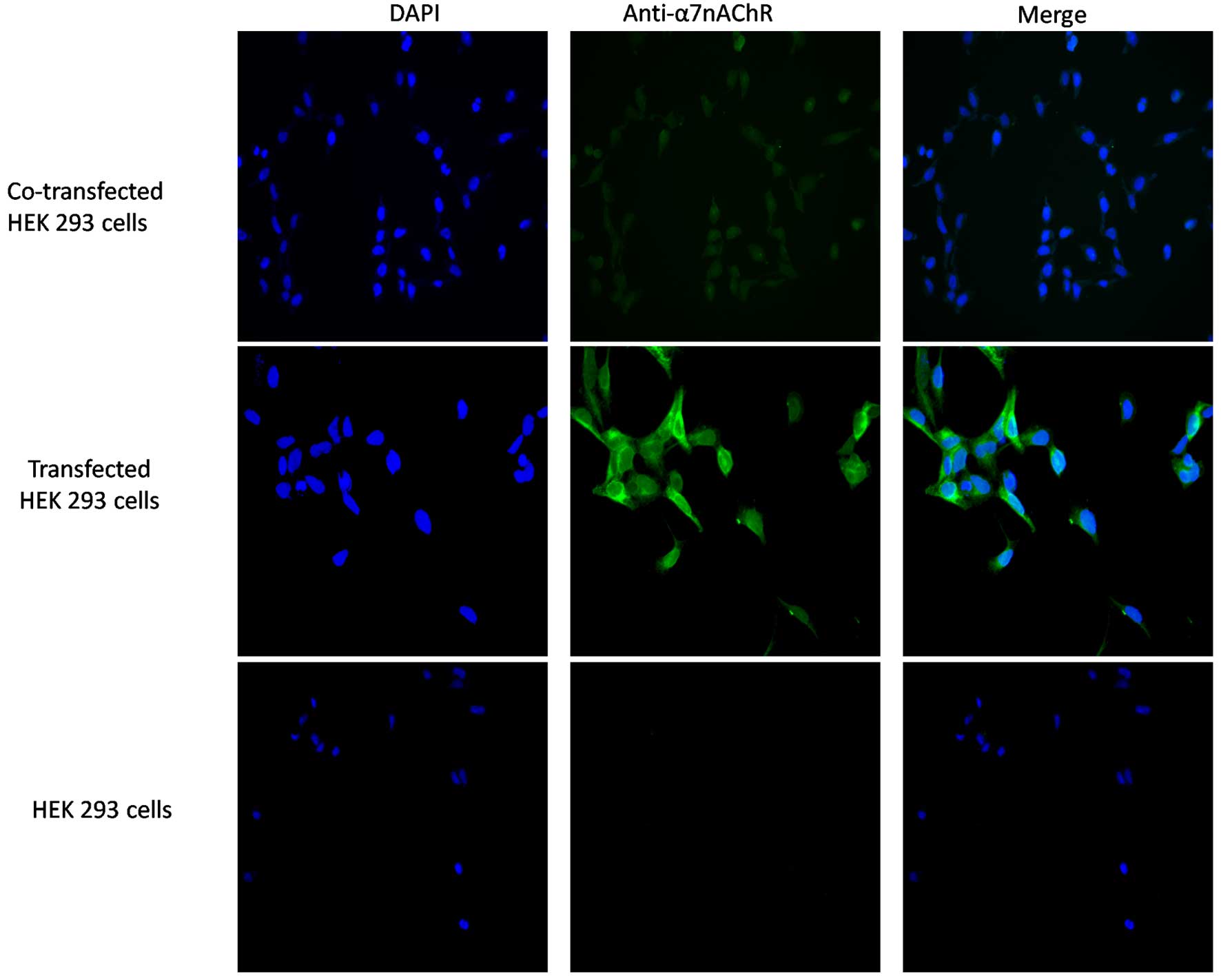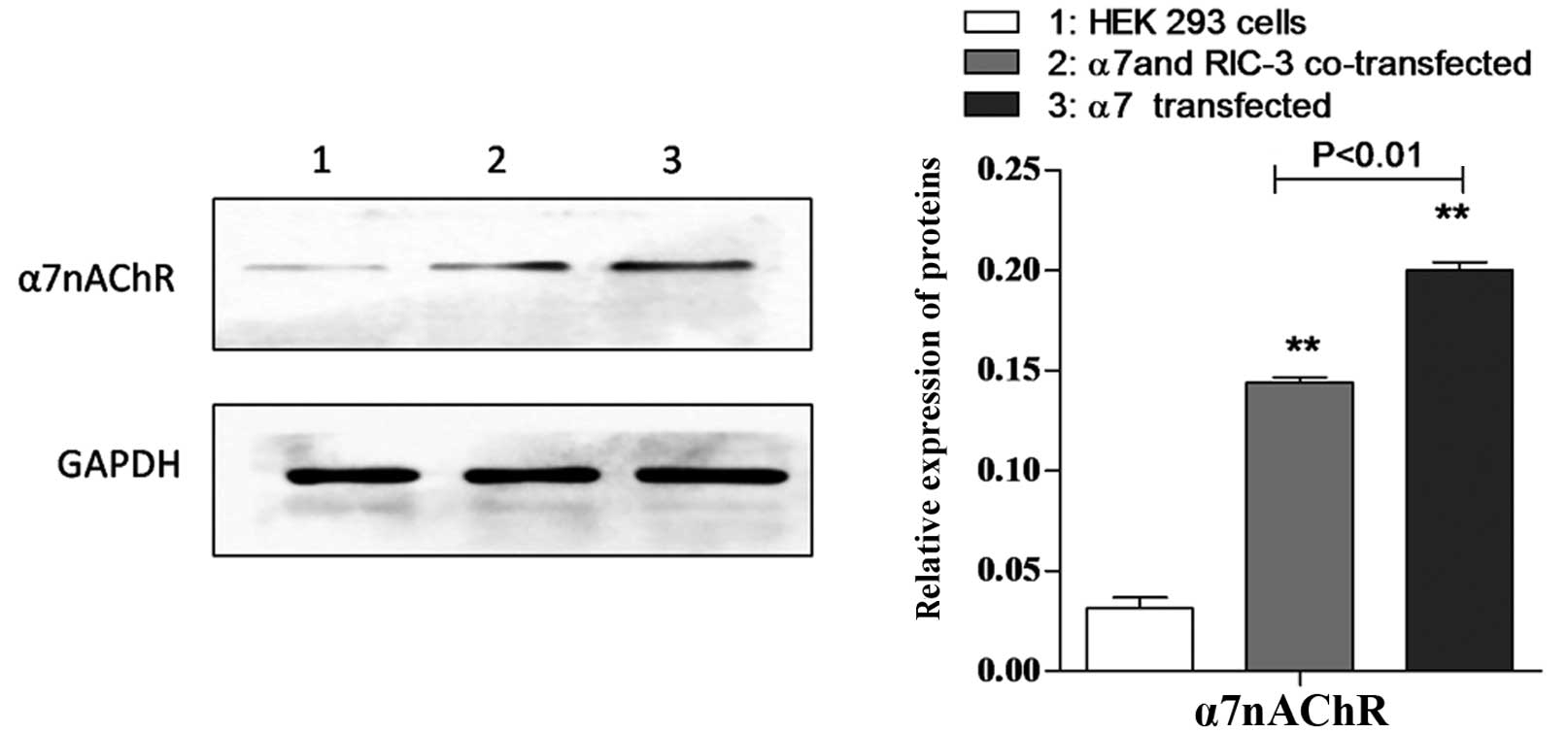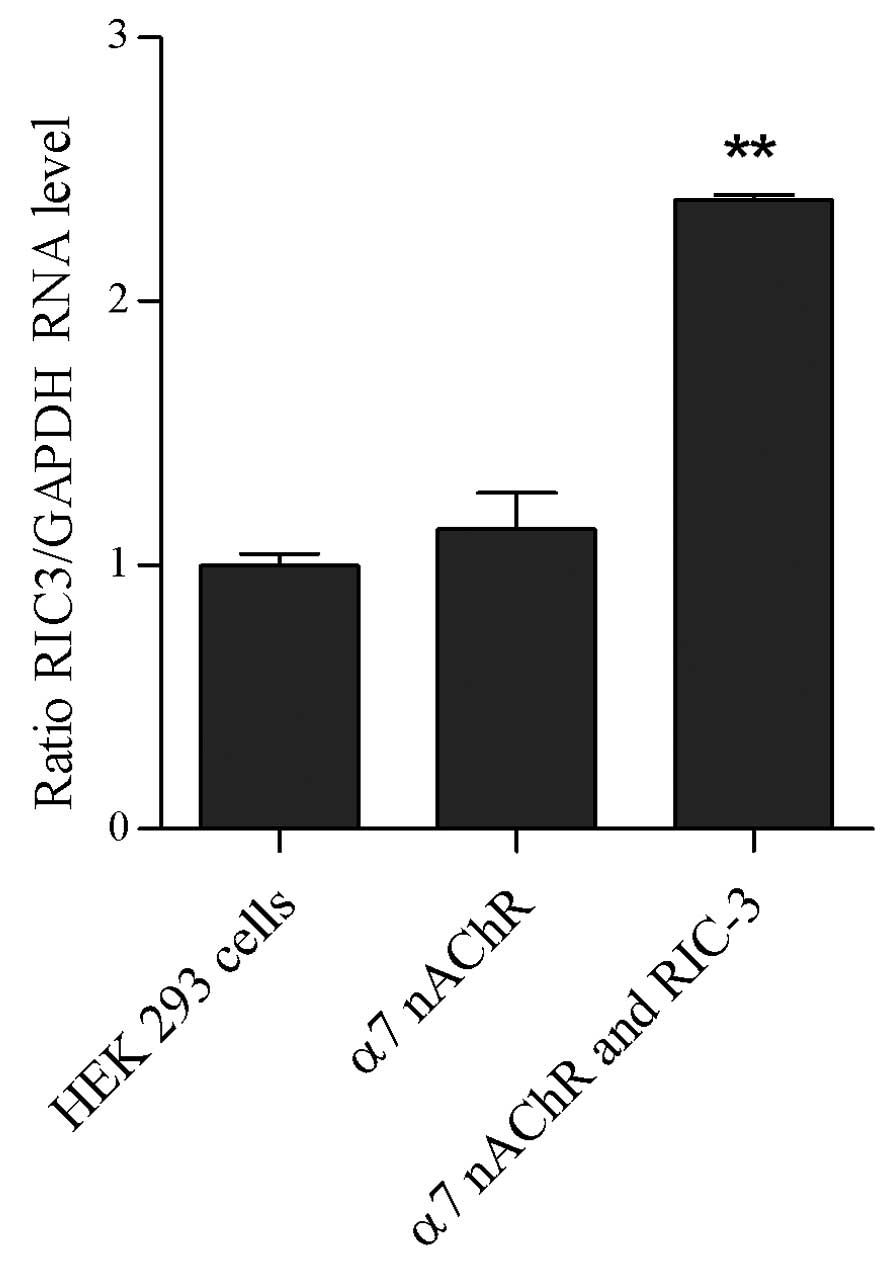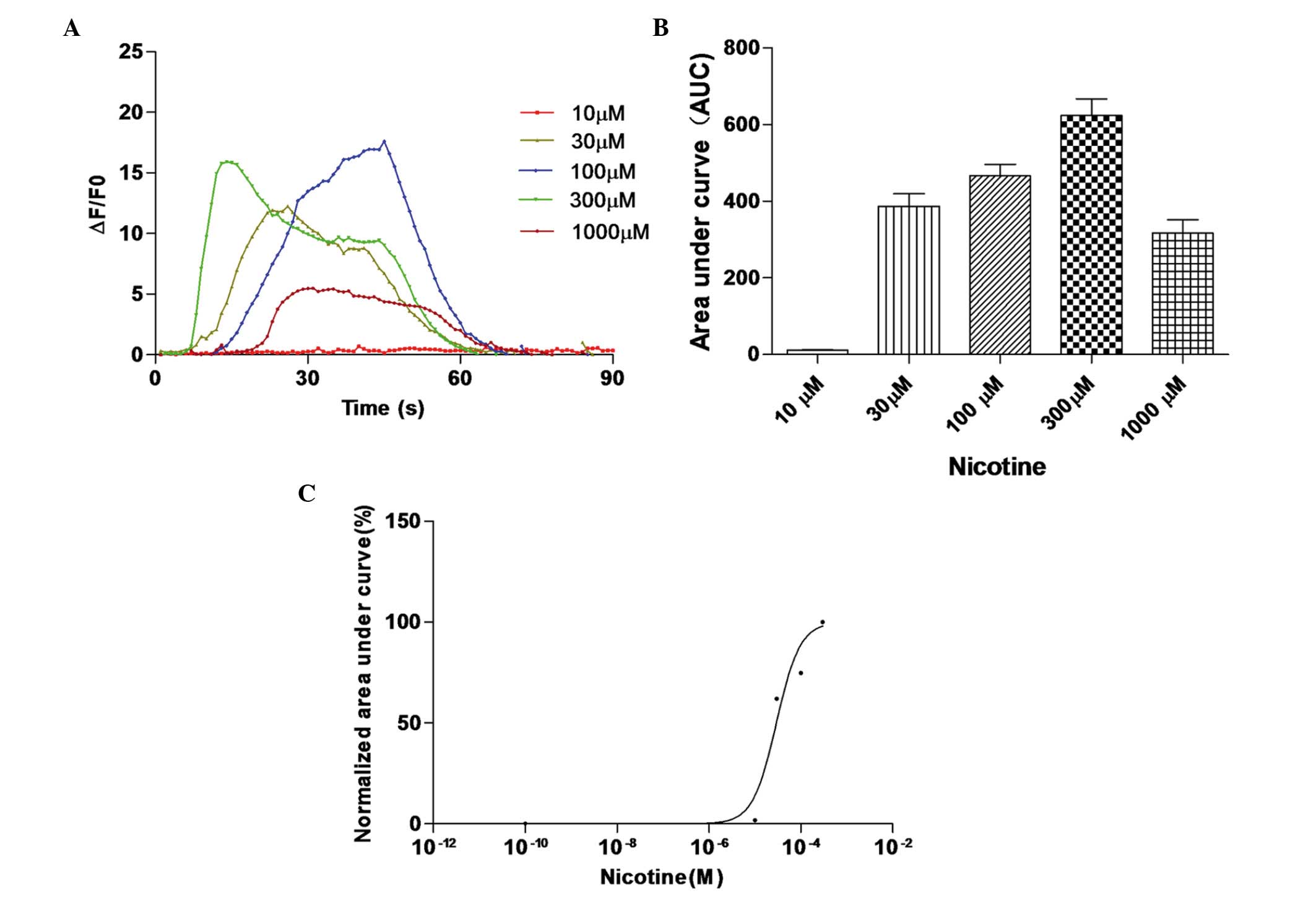Functional expression of human α7 nicotinic acetylcholine receptor in human embryonic kidney 293 cells
- Authors:
- Published online on: July 11, 2016 https://doi.org/10.3892/mmr.2016.5493
- Pages: 2257-2263
Metrics: Total
Views: 0 (Spandidos Publications: | PMC Statistics: )
Total PDF Downloads: 0 (Spandidos Publications: | PMC Statistics: )
Abstract
The functional expression of recombinant α7 nicotinic acetylcholine receptors in human embryonic kidney (HEK) 293 cells has presented a challenge. Resistance to inhibitors of cholinesterase 3 (RIC‑3) has been confirmed to act as a molecular chaperone of nicotinic acetylcholine receptors. The primary objectives of the present study were to investigate whether the co‑expression of human (h)RIC‑3 with human α7 nicotinic acetylcholine receptor in HEK 293 cells facilitates functional expression of the α7 nicotinic acetylcholine receptor. Subsequent to transfection, western blotting and polymerase chain reaction were used to test the expression of α7 nicotinic acetylcholine receptor and RIC-3. The α7 nicotinic acetylcholine receptor was expressed alone or co‑expressed with hRIC‑3 in the HEK 293 cells. Drug‑containing solution was then applied to the cells via a gravity‑driven perfusion system. Calcium influx in the cells was analyzed using calcium imaging. Nicotine did not induce calcium influx in the HEK 293 cells expressing human α7 nicotinic acetylcholine receptor only. However, in the cells co‑expressing human RIC‑3 and α7 nicotinic acetylcholine receptor, nicotine induced calcium influx via the α7 nicotinic acetylcholine receptor in a concentration‑dependent manner (concentration required to elicit 50% of the maximal effect=29.21 µM). Taken together, the results of the present study suggested that the co‑expression of RIC‑3 in HEK 293 cells facilitated the functional expression of the α7 nicotinic acetylcholine receptor.














